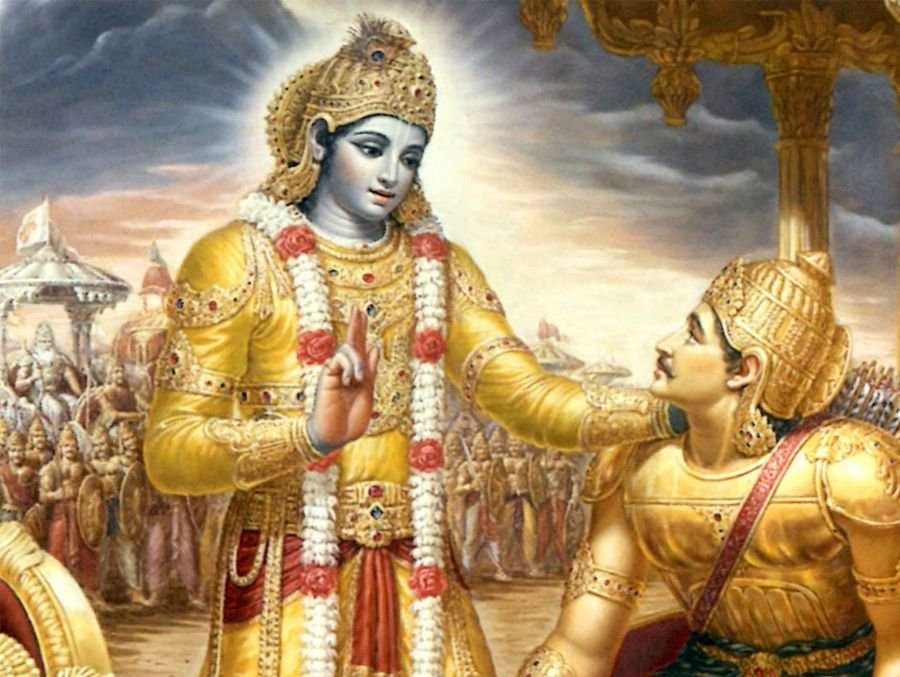(Image Courtesy Mahanidhiswami)
Kshatriyas Were Those With Mostly Rajasic Natures Combined With Sattva Guna
शौर्यं तेजो धृतिर्दाक्ष्यं युद्धे चाप्यपलायनम् |
दानमीश्वरभावश्च क्षात्रं कर्म स्वभावजम् || 18.43||
śhauryaṁ tejo dhṛitir dākṣhyaṁ yuddhe chāpy apalāyanam
dānam īśhvara-bhāvaśh cha kṣhātraṁ karma svabhāva-jam|| 18.43||
Shloka Translation
BG – Ch. 18- Ver. 43:
For Kshatriyas, work comes naturally in the forms of valour, strength, courage, weaponry expertise, a determination to never give up in combat, a generous heart for charitable causes, and leadership skills.
Explanation
Those with mostly rajasic natures mixed with sattva guna were known as Kshatriyas. They became noble, brave, commanding, and charitable as a result of this. They made up the administrative class that oversaw the government since they possessed traits that were ideal for leadership and combat roles. But they saw that they lacked the Brahmins’ knowledge and virtue. As a result, they respected the Brahmins and sought their counsel on issues of ideology, spirituality, and politics.
Verse & what we can learn
Any civilization needs law and order, a method to collect and distribute taxes, defense against outside intruders, and other administrative duties. Such systems are necessary, even in a tiny village with only a few residents. Therefore, in every community, we need capable individuals who possess the mentality and skill set necessary to carry out these managerial and leadership roles. A kshatriya is someone with the mental capacity to govern, lead, and protect.
In this shloka, Shri Krishna enumerates the characteristics of a kshatriya. The courage required to wage combat is shuryam, often known as valour. Tejaha is a term for bravery or fearlessness in the face of conflict. Fortitude, also known as dhritihi, is the capacity to stick with one’s goals in the face of both mental and physical challenges. Daakshyam is the aptitude or resourcefulness that enables one to act quickly and complete the task at hand. Apalaayanam roughly translates as “don’t turn your back on your opponent.” A capable soldier or commander must possess all of these characteristics.
Administrators, bureaucrats, and politicians are also referred to as kshatriya. The ability to let go of any sense of personal attachment to riches so that it might be used for the good of the community is known as daanam or charity.
Ishvara bhaava is the capacity to exert one’s control over a group of people in the same kind of generous manner that God does. These traits seem to be sadly absent among the kshatriyas of today. In any event, rajas predominates among kshatriyas, followed by a reasonable amount of sattva.
To acquire knowledge and to implement that knowledge in life one needs to be mentally and physically active and healthy and for that daily meditation is a great tool.
There are various types of meditation like Buddhist meditation, heartfulness meditation, mindfulness meditation, meditation for stress, and each meditation benefits are countless. There is also numerous meditation techniques for beginners which help in practicing daily meditation so go ahead and start your journey towards a peaceful and balanced life.
In the next shloka Shri Krishna explains about the qualities of vaishyas.
Let’s learn to live with “The Gita” via Meditation Affinity…
